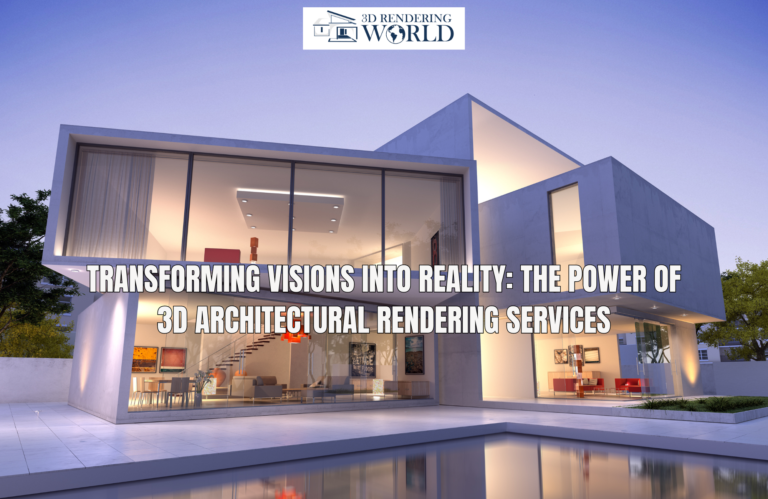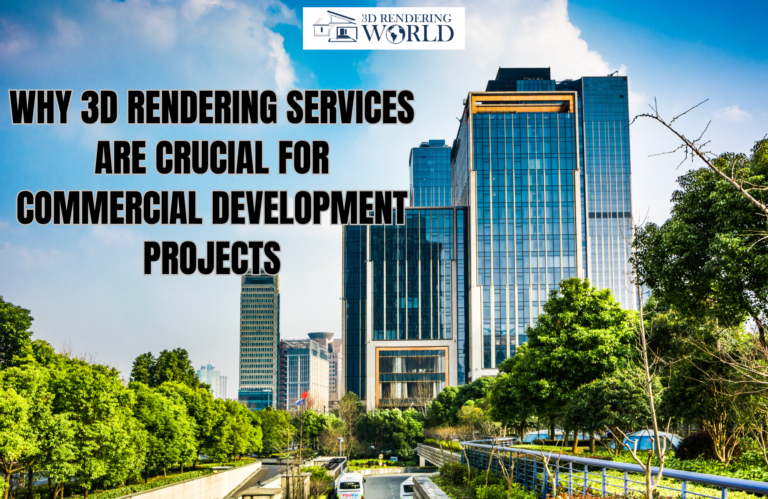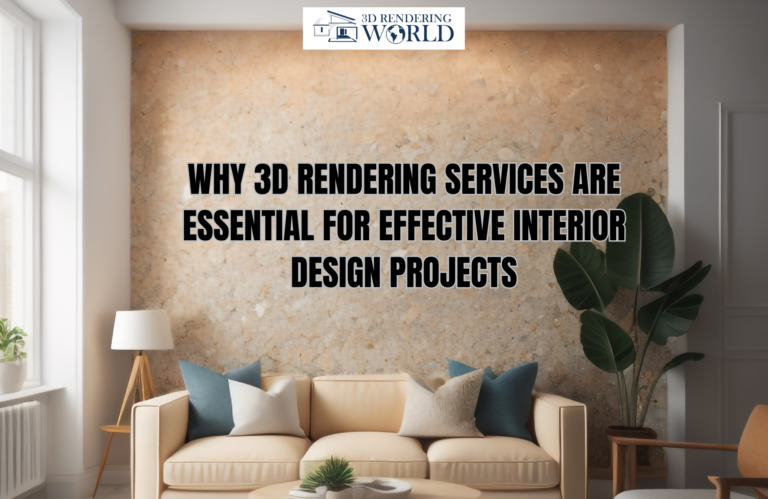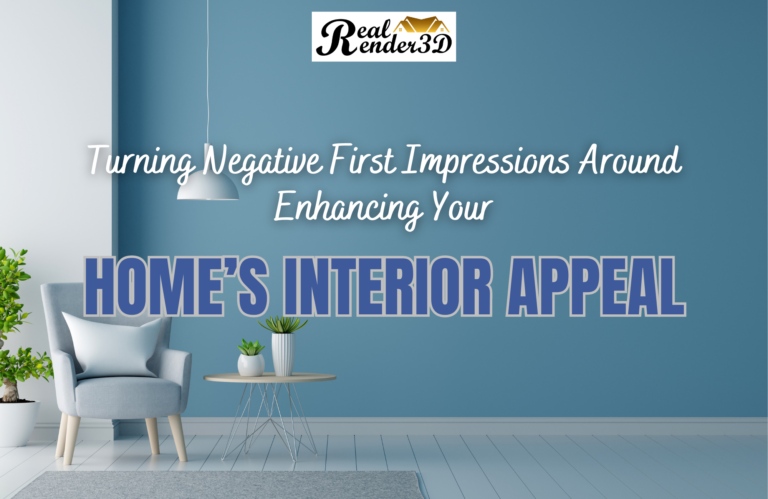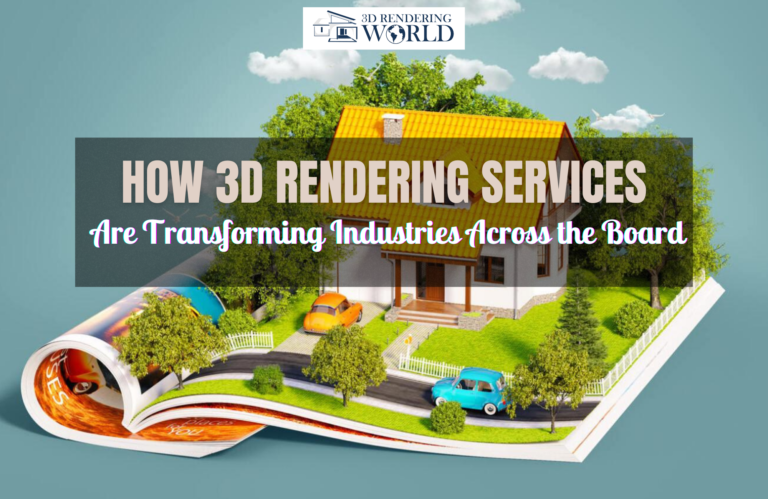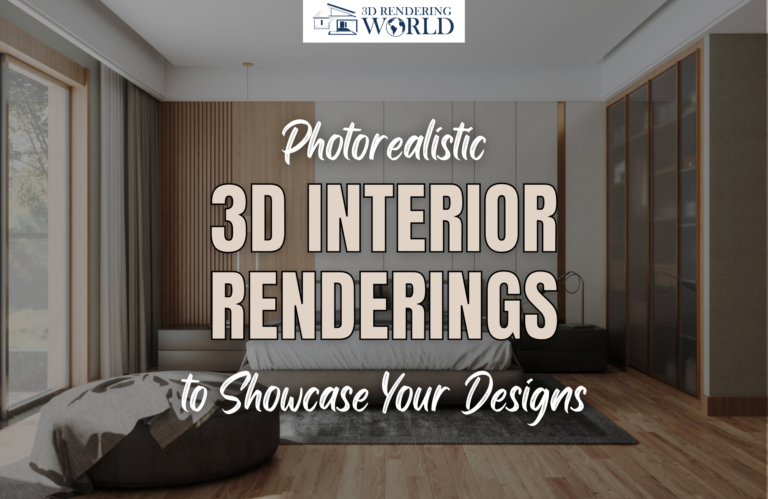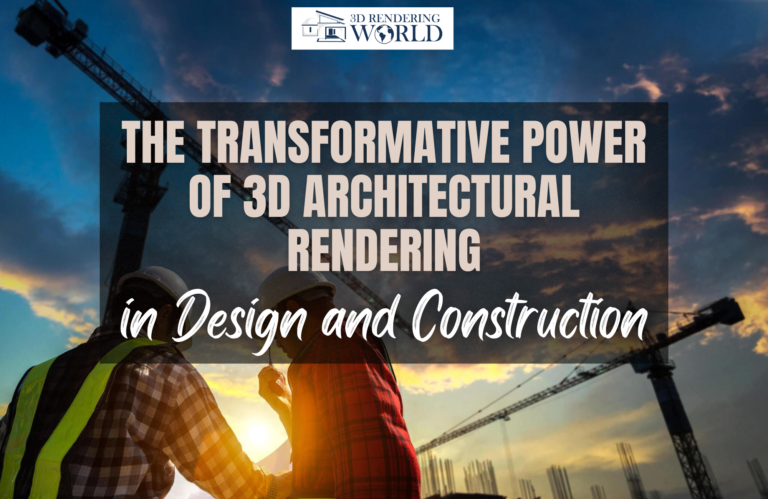Introduction
The real estate industry has undergone a massive transformation in recent years. One of the biggest catalysts for this change has been the adoption of 3D rendering services by developers, realtors and property managers. 3D rendering creates photorealistic visual representations of buildings and spaces that allow potential buyers and tenants to fully experience properties without physically being there.
In this blog post, we will explore how 3D rendering services are revolutionizing real estate and delivering tangible benefits for the industry. From streamlining the sales process to aiding investment decisions, 3D visualization is emerging as an invaluable tool for real estate professionals.
Enhancing Property Marketing

One of the biggest impacts of 3D rendering has been on property marketing. High-quality 3D images and video walkthroughs greatly enhance listing materials like brochures, websites and ads. They showcase the property in the best possible light and help it stand out.
3D exterior rendering of a building or home provides stunning visuals that capture its architecture, surroundings and amenities accurately. Interior 3D rendering displays furniture, textures, lighting and space much better than conventional photography.
3D property marketing renders make listings vivid, inviting and exciting for buyers. They build engagement and get more site visits or foot traffic. The life-like visual experience from 3D renders generates more leads and buyer interest.
Facilitating Remote Viewing

3D architectural visualization enables remote viewing of properties that may be located in another city or country. Buyers are increasingly searching for homes and assets outside their geographic area for investment or other purposes.
With 3D-rendered floor plans, panoramic views and walkthroughs, buyers can comprehensively evaluate a remote property without having to personally visit it. This saves a tremendous amount of time and expense.
Virtual staging with realistic 3D furniture and fittings aids buyers in envisioning the spaces. It brings remote properties to life and facilitates better-informed decision-making.
Aiding Investment Decisions
3D rendering delivers value even before construction starts on a property. Developers use 3D architectural visualization to showcase their design concepts through detailed scale models and immersive 3D animations.
These photorealistic renders help investors and partners envision the end results and make informed decisions about backing the project. They provide an advanced preview that builds confidence in the design.
During construction, 3D-rendered mockups ensure various stakeholders remain aligned on expectations. 3D models with materials, textures and lighting accurately depict the property vision and support constructive collaboration.
Enabling Custom Visualization

Buyers often find it difficult to visualize how their furnishings and decor would fit into a new home. With 3D interior rendering, realtors can show custom visuals of the property furnished with the buyer’s own existing or planned furniture.
This allows much better spatial understanding and planning. Buyers can provide 3D artists with the dimensions and images of their furniture to get realistic 3D renders showing them placed in the home.
Custom 3D visualization gives buyers the experience of their new living spaces well before move-in. This further accelerates the sale process and boosts satisfaction.
Facilitating Design Changes
Working with 3D models during planning makes it easier to assess and implement design changes. Photorealistic 3D renders allow stakeholders to identify any improvements or refinements required in the layouts or aesthetics before construction begins.
Tweaks are faster and cheaper to make on a 3D model compared to a finished building. Virtual staging also enables testing different furniture arrangements and modifications easily.
3D visualization enables experimentation with various design scenarios to hone the layout and flow. This leads to optimized designs aligned with stakeholder expectations.
Delivering Virtual Furnished Units
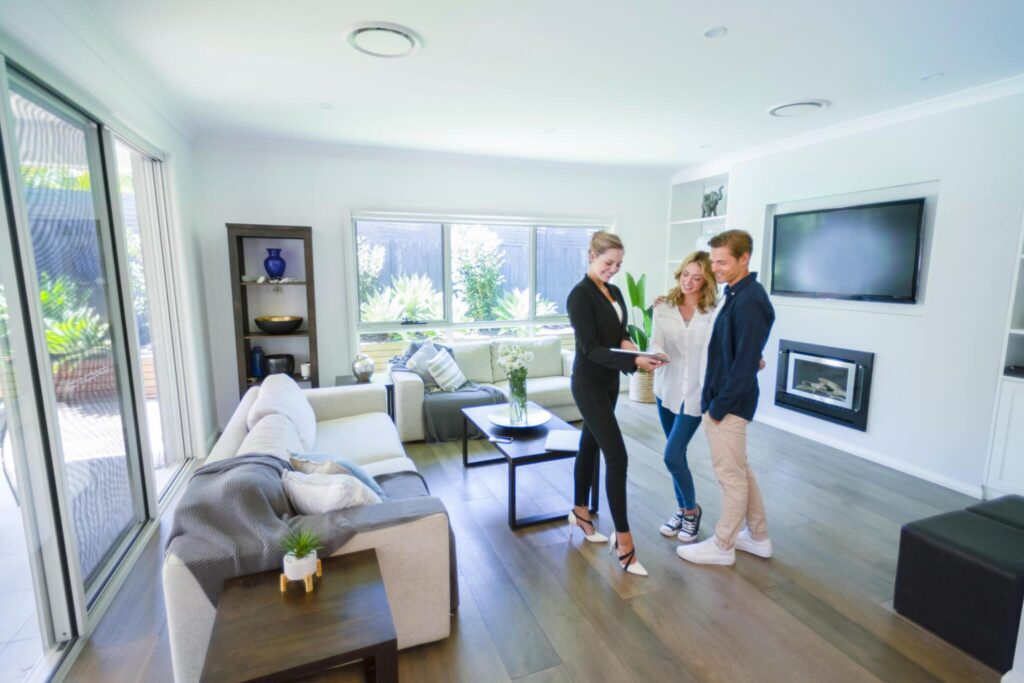
Furnished model units in large residential complexes require significant investment. 3D virtual staging provides a cost-effective alternative that delivers the benefits of furnished units.
Developers can create multiple 3D-rendered model units showcasing different furniture and decor options for each unit type. Prospective tenants get to view the spaces in a furnished state without the expense of traditional model units.
Virtual 3D models are also easier to update than physical models. Developers can refine and test furnished units with the latest furnishings and layouts at a fraction of the cost.
Lowering Marketing Costs
Preparing traditional printed marketing collateral with professional photography for each listing can get expensive. High-quality 3D renders and animations offer significant cost savings in this area.
Once a 3D model of the property has been created, unlimited renders and videos can be produced from it. Printed material with perfect perspectives can be created at scale. The 3D assets can also be reused for online listings and ads.
With reduced external photography and design costs, more resources can be allocated towards higher visibility marketing campaigns using 3D visuals.
Facilitating Better Planning
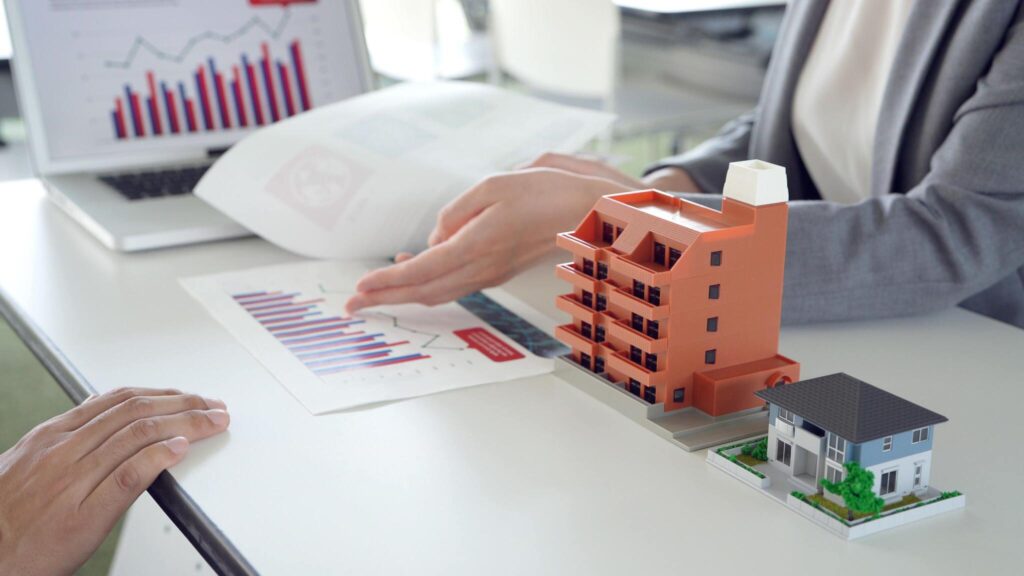
3D modelling platforms like Building Information Modeling (BIM) integrate architectural plans with critical construction data. This results in an information-rich 3D model that enables collaborative planning for the design, budgeting, construction and management of a property.
The 3D model aids in better planning for utilities, site usage restrictions, building codes and other aspects. It lowers costs by identifying inefficiencies and delays before construction starts.
Developers can provide custom 3D renderings from the model tailored to the specific needs of architects, contractors, partners and municipal agencies.
Accelerating Approvals
Gaining municipal and regulatory approvals is a key milestone for any real estate project. High-quality 3D visualizations help convey the architectural intent and site usage much more effectively to approving authorities.
Realistic 3D renders make it easy for officials to visualize the finished property. This builds confidence and accelerates the review process. 3D models enable testing compliance scenarios and optimizations before submission.
Developers also use 3D animations to communicate design aspects like shadows, wind flows and traffic flows to commissions through immersive visualization. This smooths out the approval procedures significantly.
Simplifying Property Management

Large properties like hotels, resorts or commercial spaces have extensive asset and facility management needs. 3D models integrated with FM and BIM systems streamline ongoing property management.
Staff can reference 3D floor plans and asset details for maintenance, space allocation and renovations. New construction or renovation projects also become easier with the existing 3D models.
3D renders help managers visualize and optimize space utilization scenarios for maximizing revenue. The rich digital twin of the property in 3D improves day-to-day operations and long-term management.
Conclusion
In summary, advanced 3D rendering and visualization solutions are delivering transformative benefits across the real estate sector. They enable simpler remote viewing, effective marketing, easier design changes, quicker approvals and streamlined management of properties. 3D rendering enhances stakeholder communication and understanding at every stage of the real estate lifecycle.
Leveraging 3D rendering services is becoming key for real estate professionals to remain competitive. It provides the visual intelligence that is now expected by modern property buyers, investors and partners. As the technology improves further, 3D visualization will inevitably become integral to all aspects of the real estate business.
Frequently Asked Questions
3D rendering helps developers communicate design concepts through detailed architectural visualizations. Investors can better envision the end results before construction starts. 3D models also enable collaborative planning, cost efficiencies and accelerated approvals.
3D-rendered images and videos showcase properties vividly and build more engagement. They facilitate remote viewing and help listings stand out. 3D visualization generates more leads and buyer interest.
Virtual 3D staging allows potential buyers to view properties in a furnished state. Custom staging with the buyer's own furniture facilitates better spatial planning. This accelerates sales by improving design visualization.
Custom 3D interior renders with the buyer's furnishings help them envision how their belongings would fit and look in the new space. This enhances understanding and aids decision-making.
Reusable 3D models lower the costs of external photography and design work for marketing materials. Unlimited 3D renders and videos can be produced from a single model at scale.
Integrated 3D models help reference asset details for maintenance, space planning and renovations. They aid visualization and optimization of space usage and revenue generation.
The key benefits are enhanced marketing, easier remote viewing, improved design visualization, accelerated approvals, lowered costs, better planning and simplified property management.


